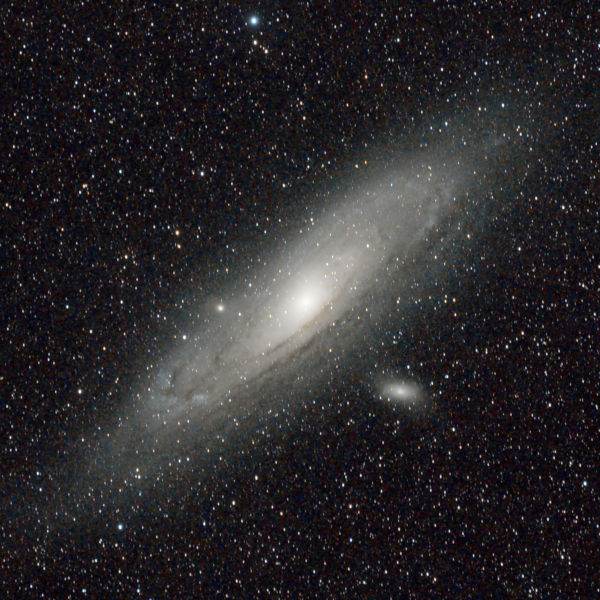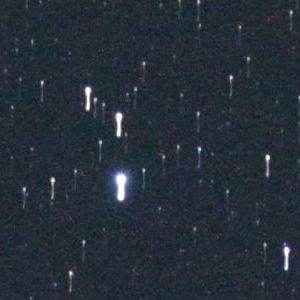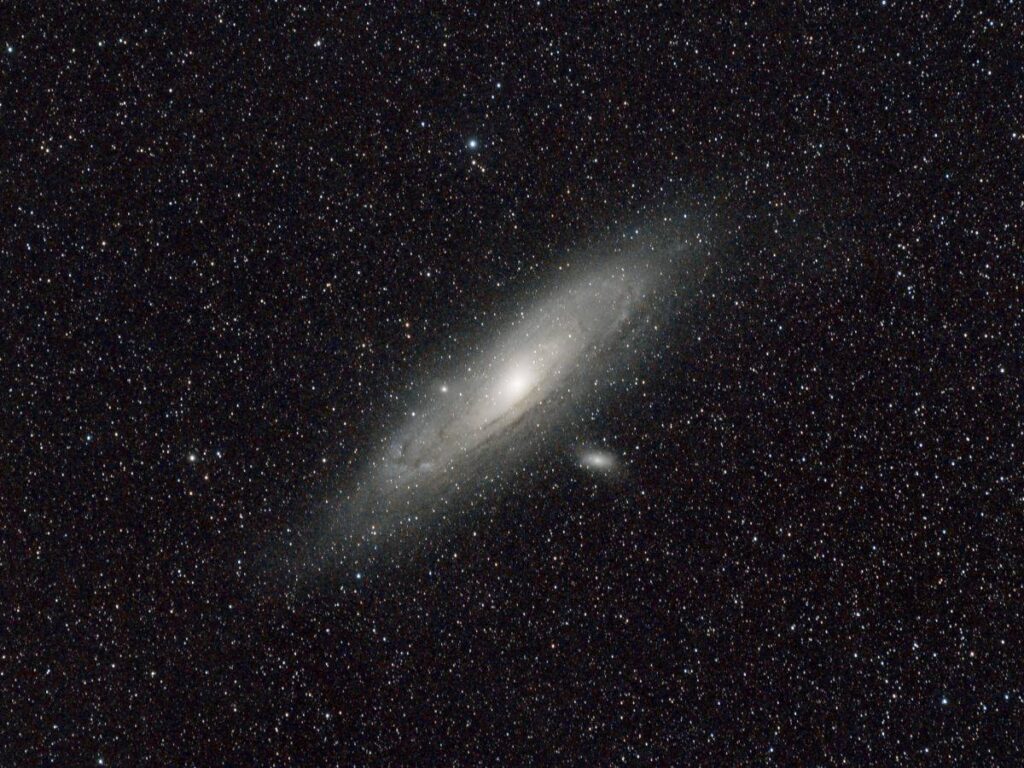
I was hoping to have at least one more good night for imaging during our short little family trip. And I got my wish. Although I will admit I was a bit nervous about the weather. Two nights ago I headed out and got all set up only to have the skies cloud over once the evening cooled a bit. So I was a bit dubious about what I might encounter this evening. I wouldn’t say the skies were perfect, but the conditions held for a long night of testing. And this evening from this Bortle 4 location, I decided to let Gamma take a crack at Andromeda.
Pushing Gamma’s Limits
I want to take this opportunity under darker skies to really push the limits with Star Tracker Gamma. So my plan for this evening is to take 90-second exposures. I’m under no illusions that this is going to be difficult. But I’m hoping for 2 things. First, I’m hoping to get my best image to date of Andromeda. And second, I want to evaluate Gamma to learn more about what I can do to ensure the final version will be as good as it can be. I think I can safely say that I accomplished my goals, but there’s plenty of room for improvement.
New Things Learned About the Gamma Test Rig
I think it’s OK to spoil things a bit and tell you now that I could only keep about 40% of my photos for stacking this evening. I’m hoping the final Gamma version will perform better than this, but I was expecting a challenging session. I found that I was fighting 2 primary problems. Balance and rig flexibility. And these two issues are loosely related. When the rig flexes, it’s difficult to balance. And when the tracker isn’t balanced, it really struggles to track well. This is especially true when coupled with the amount of backlash I already know is in my system.

Here is a rather typical example taken from a RAW image from my session this evening. What I’m seeing is that when I balance the rig, it will take good images for a few minutes before I lose tracking to this kind of chatter. Then I need to rebalance a bit and then I’m back to good photos. I suppose I can work with this, however, you need to realize that every time I fiddle with the rig, I’m likely further compromising my polar alignment. So this isn’t a great solution. Plus, this puts a lot of strain on the motor which is also not desirable.
I can begin to address this in a number of ways for the final Gamma version. First, I can ensure that the dovetail plate is solidly printed with good contact points to the Gamma tracker base. Second, I’ll need to design the main housing with enough cross support to minimize deflection. And finally, I’m strongly considering moving away from a hollow tube as the main shaft to a solid aluminum tube. I might also reconsider my camera mount arm to tighten things up there as well.
While I had my fair share of rubbish photos tonight with 90-second exposures, this is all good learning that I could only glean from running these kinds of tests.
Andromeda From a Bortle 4 Location
OK, enough about Gamma. It’s time to talk about my image of Andromeda from these darker Bortle 4 skies. You already know that I’m taking 90-second exposures. As for the rest of the setup, I’m using the Samyang 135mm f/2 lens and stopping down to f/3.3. I’ve set the ISO to 1600 for this test. I know I’m sacrificing a little bit of dynamic range in my photo but I’m hoping that I’ll see a little less noise in my images. If I had it to do over again, I probably would have stopped down to f/4 with an ISO of 3200, but I’m nonetheless happy with the results.
I got a rather late start as I was evaluating the balance issues with Gamma, but I managed to rip off 60 90-second exposures under the dark and clear skies. Additionally, I took 15 dark frames and 30 flat frames for calibration. I kept 30 light frames for stacking and Siril rejected another 5 images which left me with 25 light frames for a total integration time of 37 plus minutes. A lot shorter than I was hoping for, but good for where I am with Gamma.

Andromeda Image Take-Aways
When compared to the last time I imaged Andromeda from a Bortle 4 location, I’m comfortable stating that this is my best image to date of the galaxy. It’s clear that at least for this target there is an amazing advantage to taking long-exposure photos. Obviously, the signal-to-noise ratio improvement allows a lot more detail to come through in the galaxy’s arms. I’m looking forward to having the opportunity to image Andromeda with these settings for a lot longer in the near future.
